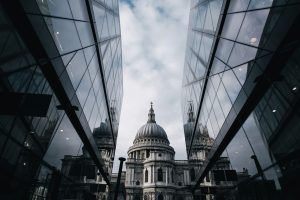Resilient Community Design: Building Neighborhoods of the Future
In today’s world, the concept of community has taken on a new meaning. It is no longer simply defined by the physical proximity of individuals, but rather by the shared values, ideas, and goals that bind them together. As our society continues to face complex challenges such as urbanization, climate change, and social inequality, the need for resilient community design has become more pressing than ever before. The traditional way of building neighborhoods is no longer sustainable, and in order to create a better future for all, we must reimagine the way we design and live in our communities. In this article, we will delve into the concept of resilient community design and explore how it can help us build neighborhoods of the future.
What is Resilient Community Design?
Resilient community design is a holistic approach to neighborhood planning that aims to create strong, adaptable, and sustainable communities. It takes into consideration the interconnectivity of social, economic, and environmental systems and seeks to create a balance between them. The goal of resilient community design is to create neighborhoods that can withstand and recover from challenges such as natural disasters, economic downturns, and social upheavals.
Key Principles of Resilient Community Design
Resilient community design is based on several key principles that guide the planning, design, and development of a neighborhood. These include:
Holistic Approach
Resilient community design takes a holistic approach, considering all aspects of community life and their interconnectedness. This includes housing, transportation, food systems, recreation, and employment. By looking at the bigger picture, planners and designers can create more effective and sustainable solutions.
Social Inclusivity
Resilient community design prioritizes inclusivity and seeks to create neighborhoods where people from all walks of life can thrive. This means providing affordable housing options, accessible public spaces, and opportunities for employment and education.
Environmental Sustainability
Resilient community design acknowledges the impact of our built environment on the natural world and aims to minimize its negative effects. This includes promoting energy efficiency, reducing greenhouse gas emissions, and preserving green spaces.
Adaptability and Flexibility
A resilient community is one that is prepared for change. Resilient community design seeks to create neighborhoods that are adaptable and flexible, and can evolve to meet the changing needs of their residents.
Community Engagement
Resilient community design recognizes the importance of community input and participation in the planning and design process. It values the knowledge and experience of local residents and involves them in decision-making to ensure that the neighborhood reflects their needs and desires.
The Benefits of Resilient Community Design
Resilient community design has numerous benefits for both individuals and the community as a whole. Some of these include:
Social Cohesion and Sense of Community
A well-designed neighborhood that promotes social interactions and community engagement can foster a sense of belonging and connectedness among its residents. This can lead to a stronger and more supportive community.
Environmental Sustainability
By promoting sustainable practices, resilient community design can reduce the environmental impact of a neighborhood and help to create a healthier and cleaner environment for its inhabitants.
Economic Stability
Resilient community design can help to create stable economies by promoting local businesses, providing economic opportunities for residents, and reducing the impact of economic downturns and disasters.
Increased Quality of Life
A neighborhood that is designed with resilience in mind can provide its residents with a better quality of life. This can include access to public spaces, affordable housing, and opportunities for education and employment.
Examples of Resilient Community Design
Several neighborhoods around the world have embraced the principles of resilient community design and have seen positive results. One notable example is the community of Christchurch, New Zealand, which was devastated by a series of earthquakes in 2010 and 2011. The city has since rebuilt with a focus on sustainability and resilience, creating a vibrant and thriving community.
Another example is the Bo01 District in Sweden, which was designed with the goal of becoming a carbon-neutral community. By incorporating sustainable features such as renewable energy sources and efficient waste management systems, Bo01 has become a model for sustainable urban development.
In Conclusion
Resilient community design is a crucial element in building neighborhoods of the future. It requires a shift in thinking and a commitment to creating stronger, more sustainable, and inclusive communities. By adopting a holistic approach and involving all stakeholders in the planning and design process, we can build resilient neighborhoods that can withstand the challenges of the future and provide a better life for all residents.











